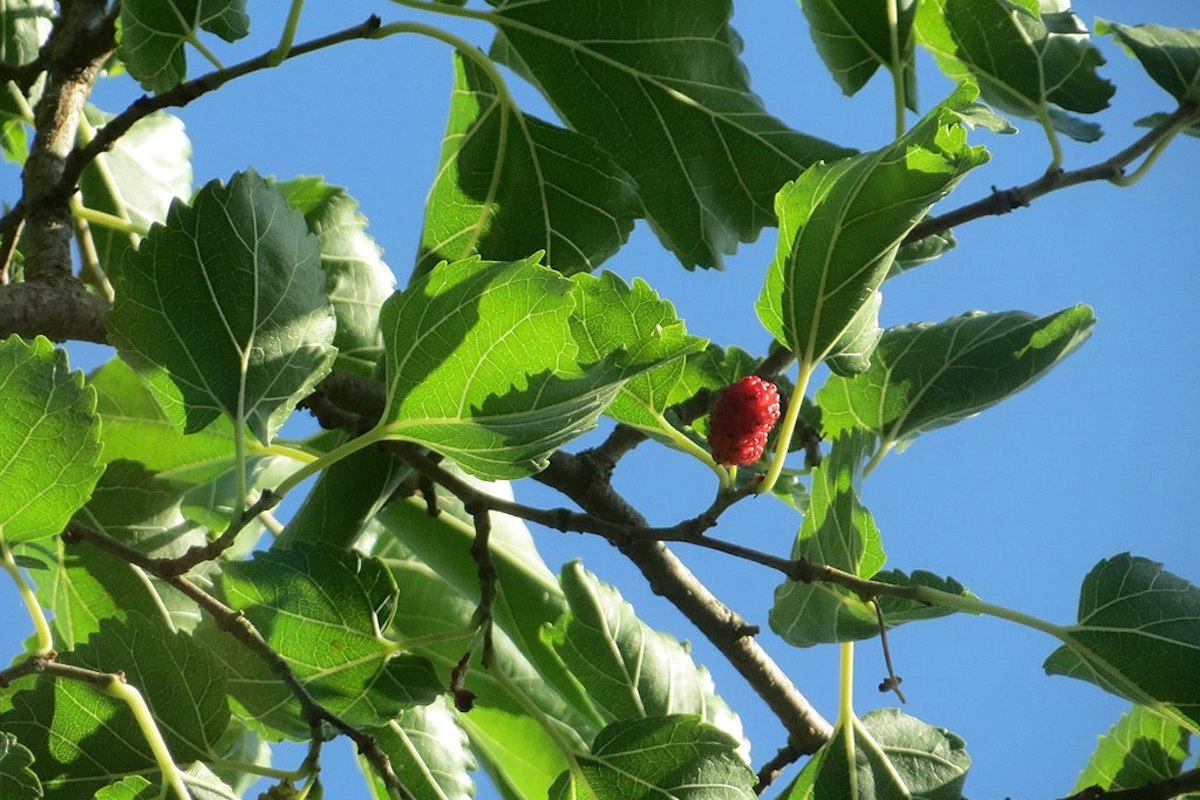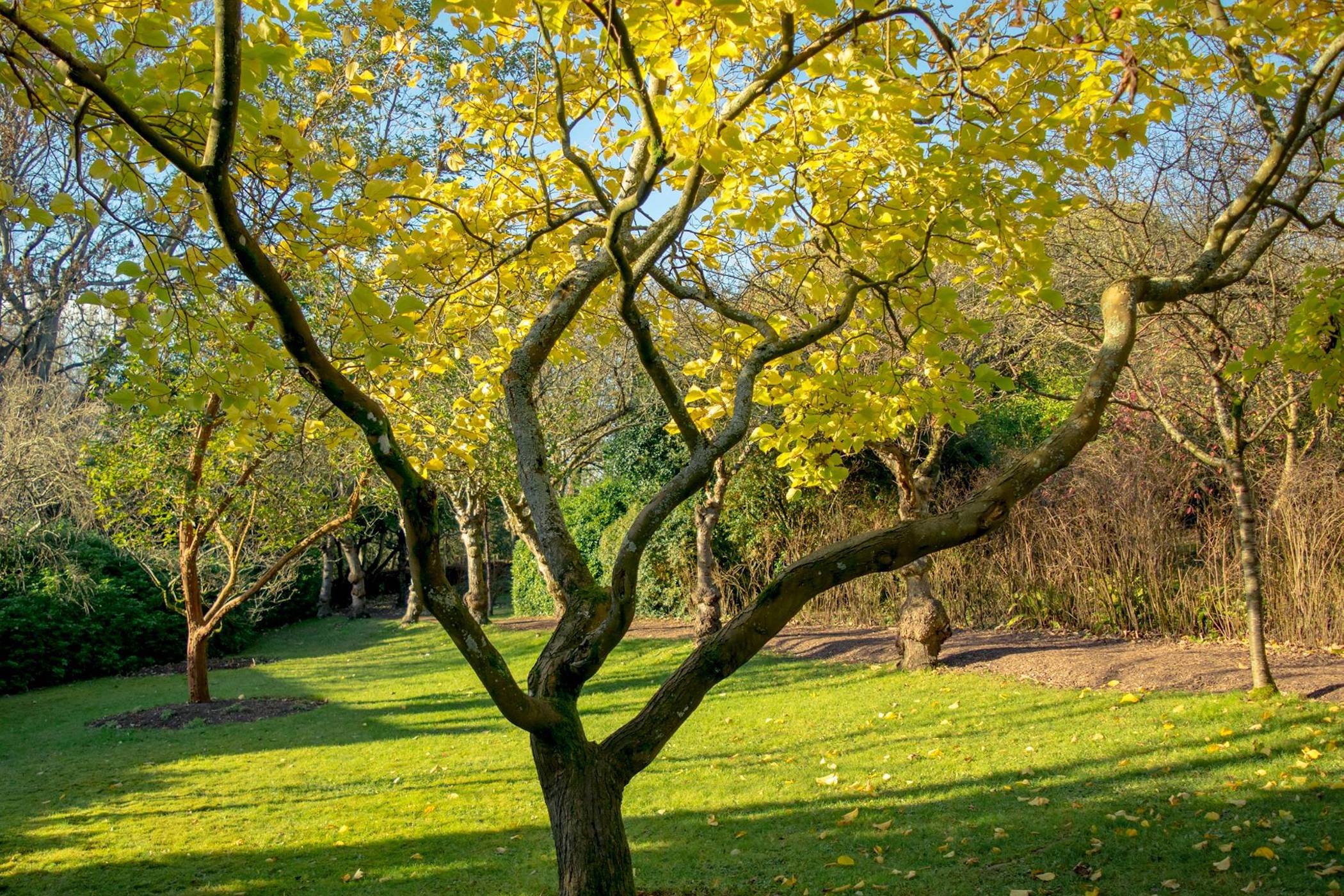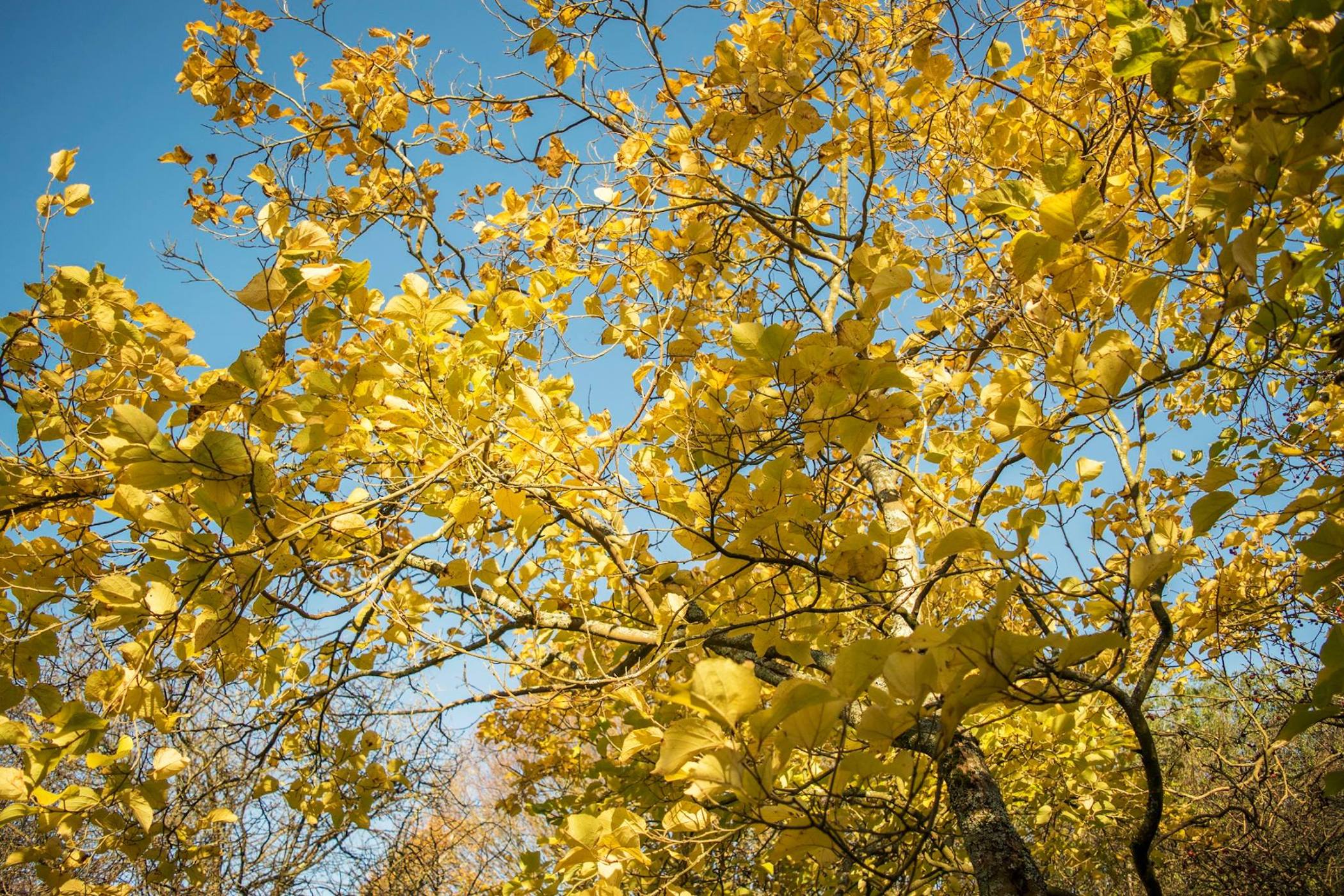Morus nigra
Approx. 0.5 litre pot
About this cultivar:
Morus nigra is commonly called the black mulberry and is a species of flowering plant native to southwestern Asia and the Iberian Peninsula, where it has been cultivated for so long that its precise natural range is unknown.
Black mulberry may be distinguished from the other species by the uniformly hairy lower surface of its leaves. The summer flowers are not notable but fruit will show late summer and early autumn. However the plant will need a few years before it starts fruiting. Whilst you wait a few years from the fruit you can enjoy it annual autumn colour.
Versatile, it can be grown as a specimen tree, pruned to a bush, trained to a wall, or even grown into a hedge. Its half wild, half graceful, habit as means it serves as a nice transition plant from formal to wilder areas.
So, in sum: Easy, fruit, versatile, habit, and autumn colour.
- Position: Full sun, partial shade
- Soil: Almost any soil, grows well in Ballyrobert
- Flowers: June, July
-
Other features: Grows well in Ballyrobert, Interesting Foliage or Fruit
- Hardiness: Fully hardy, grows well in Ballyrobert, H6 - Hardy in all of UK and northern Europe (-20 to -15°C)
- Habit: Bushy
- Foliage: Deciduous
- Height: 200 - 1200 cm (6.5 - 40 ft) Prune if you want to keep smaller!
- Spread: 200 - 1200 cm (6.5 - 40 ft) Prune if you want to keep smaller!
- Time to full growth: 20 to 50 years
- Plant type: Herbaceous Perennial, shrub, tree
- Colour: Green, yellow
- Goes well with: -
About this genus:
Morus is a genus of flowering plants in the family Moraceae (often called the mulberry family or fig family) and consists of diverse species of deciduous trees commonly known as mulberries, growing wild and under cultivation in many temperate world regions. The latin genus name comes from the Greek word for the tree (μουριά, mouria). The taxonomy of Morus is, well, complex. Fossils have been found of the genus dating it over 2.4 million years old, and there have been many hybrids from its cultivation over the years. As a result most sources will admit 20 species whilst some go as far as 150 species.
Despite the popular nursery rhyme Mulberry is more of a tree, not a bush. If you want a bush you will have to prune it often. Mulberries are fast-growing when young, and can some mature species can grow to 24 m (80 ft) tall. The leaves are alternately arranged, simple, and often lobed and serrated on the margin. With some species the autumn colour is a wonderful yellow. The immature fruits are white, green, or pale yellow. The fruit turns from pink to red while ripening, then dark purple or black, and has a sweet flavour when fully ripe. Mulberries are not just eaten raw but can be used in pies, tarts, wines, cordials, and herbal teas.
A Babylonian myth, which Ovid incorporated in his Metamorphoses, attributes the reddish-purple colour of the mulberry fruits to the tragic deaths of the lovers Pyramus and Thisbe. Agreeing to meet under a mulberry tree, Thisbe runs when scared by a lion, but drops her cloak which the lion stains with blood from a previous kill. Pyramus arrives, see the cloak, and believes that she was killed by the lion. He kills himself on the spot, obviously. Thisbe comes back to tell him her story of the lion, finds him dead, then kills herself too. So, a lot of blood around that mulberry tree. Their splashed blood stained the previously white fruit, and the gods forever changed the mulberry's colour to honour their forbidden love.
But it is not just the fruit which is of interest! Mulberry leaves are the sole food source of the silkworm (Bombyx mori, named after the mulberry genus Morus), the cocoon of which is used to make silk. An not just in the far east, the Ancient Greeks and Romans cultivated the mulberry for silkworms; at least as early as 220 AD, Emperor Elagabalus wore a silk robe. English clergy wore silk vestments from about 1500 onwards.
As early as the Angkorian age (12th century) of the Khmer Empire of Southeast Asia, monks at Buddhist temples made paper from the bark of mulberry trees. The thinnest paper in the world is produced in Japan and made stems of mulberry trees. Van Gogh has a famous Mulberry tree painting, Though I’m not sure if he painted it on Mulberry paper.
Species of Morus are native across the Northern hemisphere, so as you’d expect it is difficult to pin them down in terms of size and growing conditions. However, you can also expect we can find some species that will be easy to grow in the garden. So, I’ll go out on a limb and say any Morus we sell is probably fool proof if it not far too dry, wet, or shaded. You’ll probably want them for the fruit and the autumn colour, as opposed to the silk and the paper. They also tend to have a nice habit, wild but graceful. Every garden could do with... morus ... of this plant....










